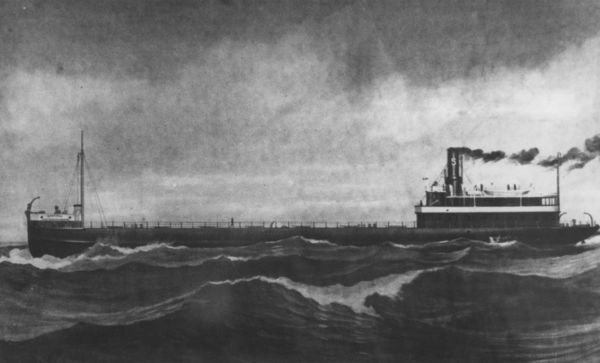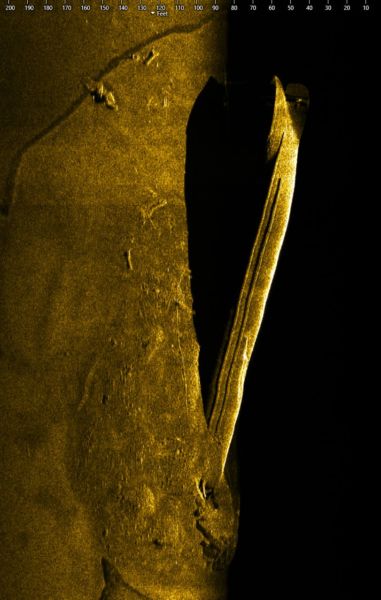“If you want to understand today you have to search yesterday.”
- Pearl S. Buck, American novelist (1892-1973)
Michigan is a water state—in fact, it has the highest percentage of water out of all states in the U.S.—41.5% to be exact. Lake Huron, which is in Michigan and Ontario, is famous for its treacherous waters, ice, and fog, which have claimed the lives of many sailors, such that it was nicknamed “Shipwreck Alley.” There are mysteries still out there, beneath the waters, just waiting to be discovered. Mysteries, such as shipwrecks, that hold the stories from over 200 years of Great Lakes shipping and countless sailors and passengers who traveled the freshwater seas.
Ever since Thunder Bay National Marine Sanctuary was designated in 2000 as the first national marine sanctuary in the Great Lakes, staff and partners have undertaken several expeditions to search for shipwrecks, and have even discovered some that were lost for decades. Probably one of the most notable discoveries within the sanctuary since designation is that of the steamer Choctaw (1892-1915) and wooden bulk freighter Ohio (1873-1894) in historic shipping lanes off Presque Isle, Michigan in Lake Huron.
On a cool, foggy morning on July 12, 1915, the freighter Wahcondah was traveling east from Fort William, Ontario, carrying a cargo of wheat. The dense fog made it difficult to see, and at 5:30 a.m. the crew noticed another ship in Wahcondah’s path—but it was too late. That ship was Choctaw, carrying a cargo of coal along with Captain Charles A. Fox and his crew of 21 men. The 267-foot, steel semi-whaleback ship sank rapidly, and all lives on board were rescued. Despite search efforts, the exact location of the sunken 1,573 gross ton steel freighter—which was an innovative “monitor” design—remained a mystery for about 100 years. Archaeologists and shipwreck hunters have searched for Choctaw for years, and in 2011, a team of NOAA researchers, university partners, and high school students from Saginaw, Michigan came close to finding it.

In addition to protecting and educating the public about known maritime heritage resources in the sanctuary, the 2009 final management plan for the sanctuary outlined a Research Action Plan that encourages sanctuary staff and partners to locate, document, and analyze shipwreck sites of interest using historical and archival research and advanced technologies such as side-scan sonar. In 2014, after nearly seven years of research and stakeholder engagement and input, NOAA expanded the boundaries of Thunder Bay National Marine Sanctuary to 4,300 square miles in order to protect an additional 100 known and suspected historic shipwreck sites.
This allowed for an exploratory research project funded by NOAA’s Office of Ocean Exploration and Research, where high- -resolution sonars were used to map the bottom of Lake Huron within the northern extents of the expanded sanctuary boundary. Two targets of interest were discovered and investigated. Follow-up investigations carried out between June and August of 2017 included the use of two underwater robots—an autonomous underwater vehicle (AUV) from Michigan Technological University’s Great Lakes Research Center and a remotely operated vehicle provided and piloted by Northwestern Michigan College, as well as direct observations through technical scuba diving.

After carefully observing the features of the wrecks and comparing the images and videos to historical records of the vessels, Thunder Bay National Marine Sanctuary officially announced the discovery of Choctaw and Ohio. When Choctaw’s wreck site was found, Captain Fox’s granddaughter, Ruth Schwartz Fisher, and her niece, Diane Hausler, expressed how relieved they were to finally have closure and that the discovery brought their family back together.
Interestingly, while providing closure on the resting places of Choctaw and Ohio, this project also re-opened the door to another mystery—the whereabouts of the schooner-barge Ironton, the vessel that collided with Ohio. Researchers are still working to uncover that mystery today.
Keeping Shipwrecks and Divers Safe
After a historically significant shipwreck is confirmed in sanctuary waters, it becomes a cultural resource that is routinely monitored and protected. In 2021, Thunder Bay National Marine Sanctuary staff set out to assess the site, and document and monitor the wreck of Choctaw from a much larger Coast Guard vessel platform. The team was able to get excellent underwater footage of the historical site using an ROV, allowing for closer observation of the wreck’s features. The sanctuary plans to place a mooring buoy at the wreck site, which is about 300 feet deep, in order to protect the wreck from accidental anchor damage and ensure recreational scuba diving safety.
Uncovering Mysteries and Engaging Communities
When a historical shipwreck is discovered, it’s brought back to life. Not only for shipwreck hunters, archaeologists, maritime history-lovers, and the surviving family members of those lost at sea, but for the surrounding community, including K-12 students. In addition to protecting the wreck sites, the sanctuary works with partners to ensure that these findings get translated into oral and visual history in museums, videos, 360 degree virtual experiences, and other outreach products to keep the stories alive and strengthen the surrounding community’s connection to their local waters and American maritime history.
The expeditions that led to the discovery of Choctaw were funded by a grant from NOAA’s Office of Ocean Exploration and Research, and the project was made possible through research partnerships with NOAA’s Great Lakes Environmental Research Laboratory, University of Delaware, Michigan Technological University, Northwest Michigan College, the Michigan Department of Natural Resources, the United States Coast Guard, and University of North Carolina Wilmington’s Undersea Vehicle Program.
Rachel Plunkett is the writer/editor for NOAA’s Office of National Marine Sanctuaries
Videos and Other Resources
Explore the Blue 360: Shipwreck Alley
Thunder Bay Shipwreck Videos on YouTube
Pushing the Boundaries: Technology-Driven Exploration
History Meets Technology in Shipwreck Alley
Finding history: The discovery of two lost shipwrecks
Researchers Discover Two Historic Shipwrecks in Thunder Bay



